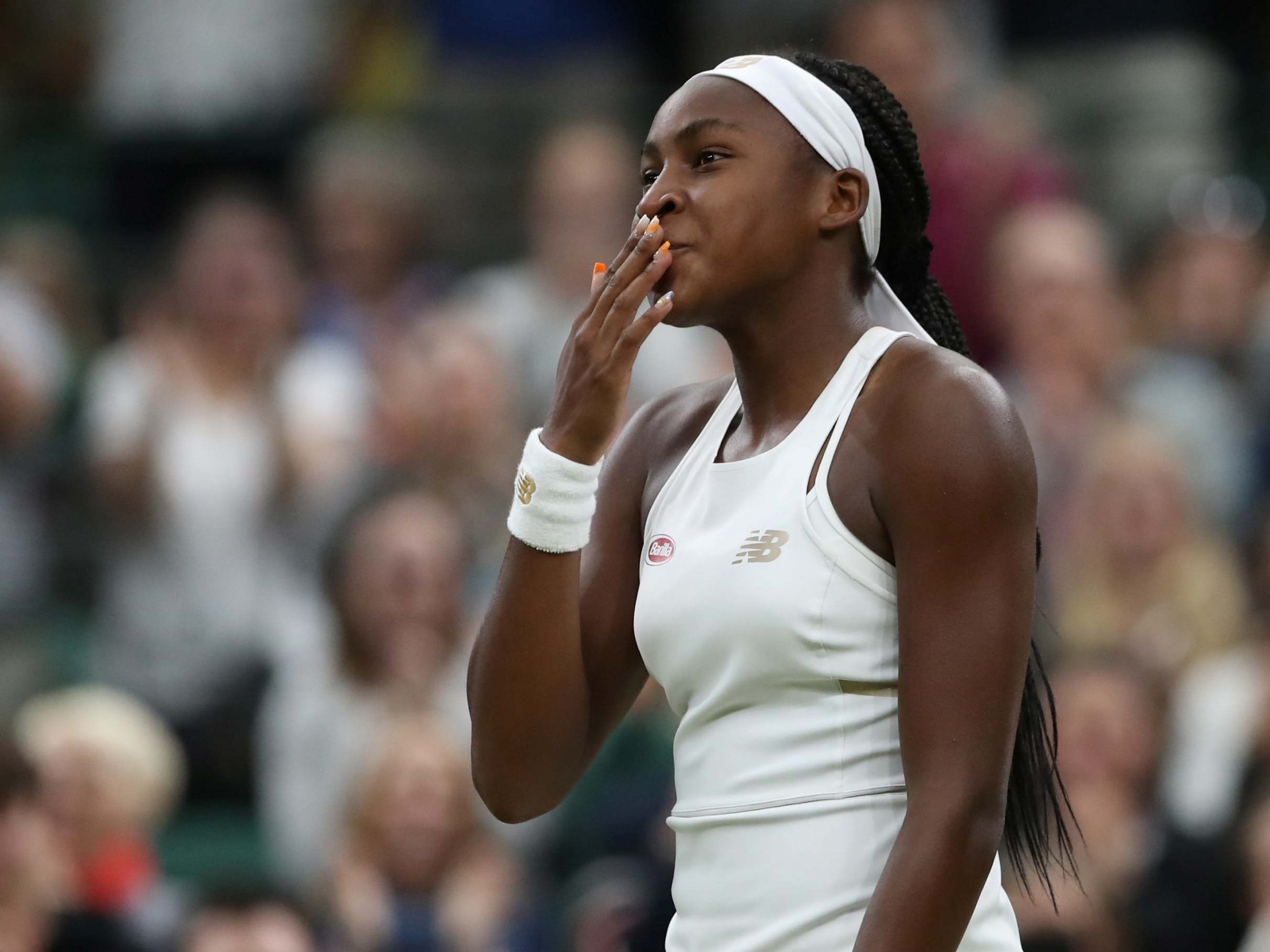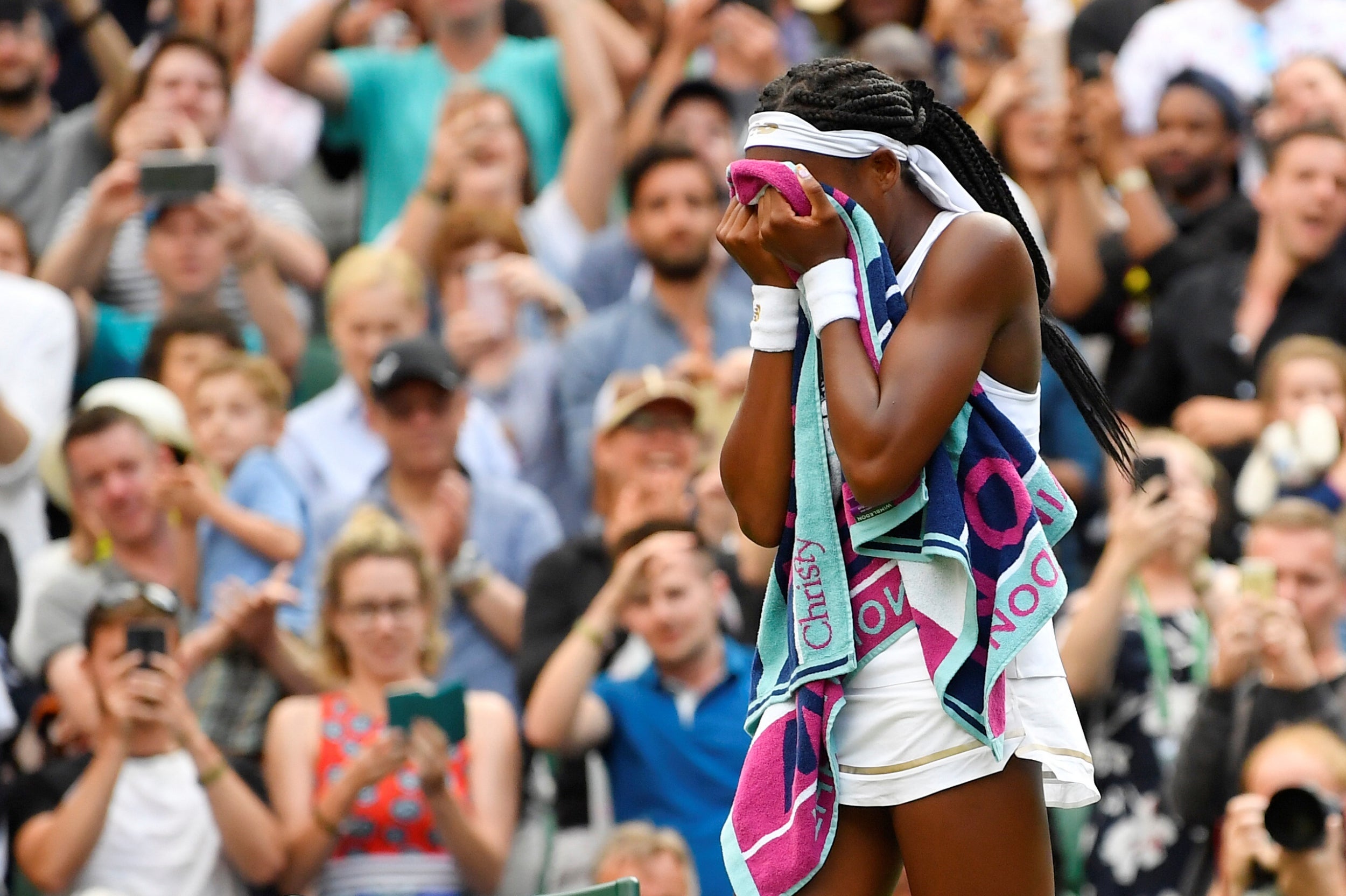Wimbledon 2019: How Cori Gauff plans to overcome barriers to become teenage Grand Slam champion
The WTA’s tournament limitations mean the 15-year-old’s development may be inhibited as she bids to succeed at SW19
Judging only by her performances so far this week you might expect Cori “Coco” Gauff to be challenging for Grand Slam titles within two or three years, but recent history will be against the 15-year-old American. Since 2004, when 17-year-old Maria Sharapova won Wimbledon and 19-year-old Svetlana Kuznetsova won the US Open, no teenaged woman has won a Grand Slam singles title.
Gauff’s remarkable straight-sets victories here at Wimbledon over Venus Williams and Magdalena Rybarikova have taken her into a very winnable third-round meeting on Friday with Polona Hercog, the world No 60. At 15 years and four months, Gauff is the youngest player to reach the last 32 at the All England Club since Jennifer Capriati, who went on to reach the semi-finals in 1991.
Capriati, nevertheless, is one of the reasons why younger players have found it harder to make their breakthroughs in recent years. The American, despite her extraordinary early success, was a classic example of “teenage burn-out”. It was the struggles of players like her that led to the Women’s Tennis Association’s bringing in its “Age Eligibility Rule” in 1995 imposing restrictions on the number of professional tournaments younger players can enter.
Under the rule, players cannot turn professional before the age of 14 (Capriati having done so at 13). At 14 a player can play in up to eight professional tournaments a year, a figure that rises to 10 events at the age of 15, 12 at 16 and 16 at 17. Only when a player reaches the age of 18 is there no limit.
However, extra tournaments can be added for players who are particularly successful at junior level. Gauff, as a result of her French Open girls’ title last year and her lofty position in the world junior rankings, will be allowed to play in 14 professional tournaments between her 15th and 16th birthdays.
Although some members of Gauff’s entourage object to those restrictions, 14 tournaments is more than Serena Williams has played in any one year since 2014. Last year Ashleigh Barty, the current world No 1, played in 22 tournaments (which included two Fed Cup ties) and Naomi Osaka, the world No 2, played in 20.
The Association of Tennis Professionals, which runs the men’s tour, has similar age-related rules for younger players, but from the age of 16 there are no restrictions on the number of tournaments males can play.
Gauff spends some of her time training at Patrick Mouratoglou’s academy near Nice and the Frenchman believes that the WTA’s age rule can disrupt a player’s momentum and may hinder the development of potential Grand Slam champions. He points to Martina Hingis as an example of a player who benefited from the number of professional tournaments she played as a teenager.
Hingis was the youngest player ever to win a match at a Grand Slam tournament at 14 years and three months. Before her 15th birthday she was beating top 10 players and at 15 years and 282 days she became Wimbledon’s youngest ever senior champion when she won the doubles title alongside Helena Sukova.
At 16 Hingis won three Grand Slam singles titles, including Wimbledon, and became world No 1. The Swiss won five Grand Slam singles titles in total, all of them as a teenager. She retired because of an ankle injury at 22, though she subsequently made two moderately successful comebacks before finally putting her rackets away two years ago at the age of 36.
While playing so much tennis at a young age might have had an impact on Hingis physically, Capriati’s problems were more mental and emotional. Having made her professional debut at 13, the American enjoyed remarkable success in her early years before going off the rails in spectacular fashion.

Having taken a break from the sport she was caught in possession of marijuana and had dealings with the police before she came back to enjoy the best spell of her career, winning three Grand Slam titles before her career was ended by injury.
The WTA has conducted two major reviews of the age eligibility rule since it was introduced. The most recent of them resulted in the “merited increases” in the number of tournaments players are allowed to enter if they perform well at junior level.
Another review is currently under way and Gauff’s father, who also coaches her, would like the WTA to consider restricting the number of matches a player can play rather than the number of tournaments.
While there might be some tweaking of the restrictions, the basics of the rule are unlikely to change as the WTA believe that tennis has become a safer and healthier sport since it was introduced. There are fewer burn-outs today, while players’ careers are longer than they used to be.

Gauff is currently playing in her seventh professional tournament since she turned 15 in March, so she can still play seven more before she turns 16 in eight months’ time.
The US Open later this summer looks certain to be on Gauff’s schedule and there will certainly be no shortage of tournaments wanting to offer her wild cards. Even with the restrictions that will be placed on her career for the next three years, it is still quite possible that she will join the ranks of teenaged Grand Slam champions.
Join our commenting forum
Join thought-provoking conversations, follow other Independent readers and see their replies
Comments
Bookmark popover
Removed from bookmarks